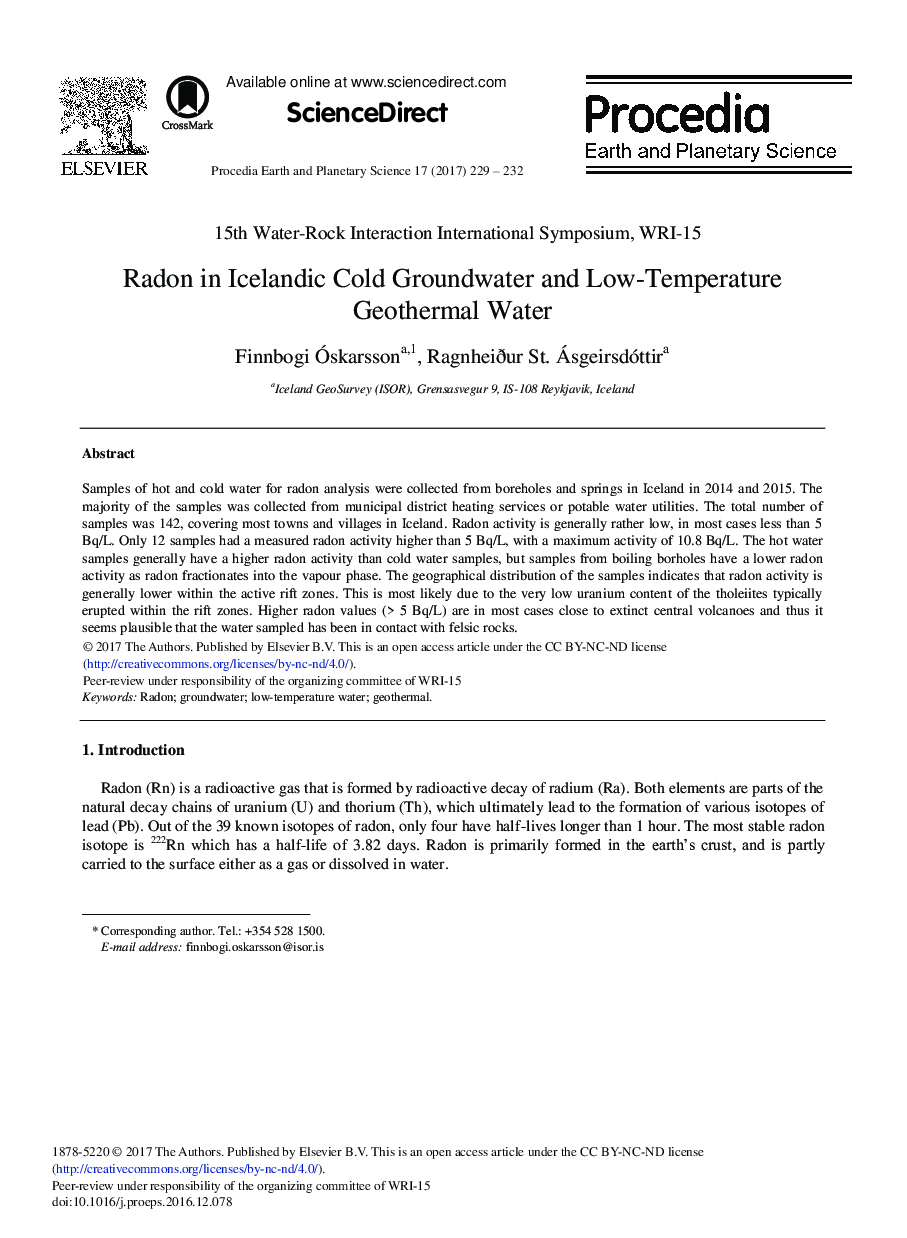| Article ID | Journal | Published Year | Pages | File Type |
|---|---|---|---|---|
| 5779276 | Procedia Earth and Planetary Science | 2017 | 4 Pages |
Samples of hot and cold water for radon analysis were collected from boreholes and springs in Iceland in 2014 and 2015. The majority of the samples was collected from municipal district heating services or potable water utilities. The total number of samples was 142, covering most towns and villages in Iceland. Radon activity is generally rather low, in most cases less than 5 Bq/L. Only 12 samples had a measured radon activity higher than 5 Bq/L, with a maximum activity of 10.8 Bq/L. The hot water samples generally have a higher radon activity than cold water samples, but samples from boiling borholes have a lower radon activity as radon fractionates into the vapour phase. The geographical distribution of the samples indicates that radon activity is generally lower within the active rift zones. This is most likely due to the very low uranium content of the tholeiites typically erupted within the rift zones. Higher radon values (> 5 Bq/L) are in most cases close to extinct central volcanoes and thus it seems plausible that the water sampled has been in contact with felsic rocks.
